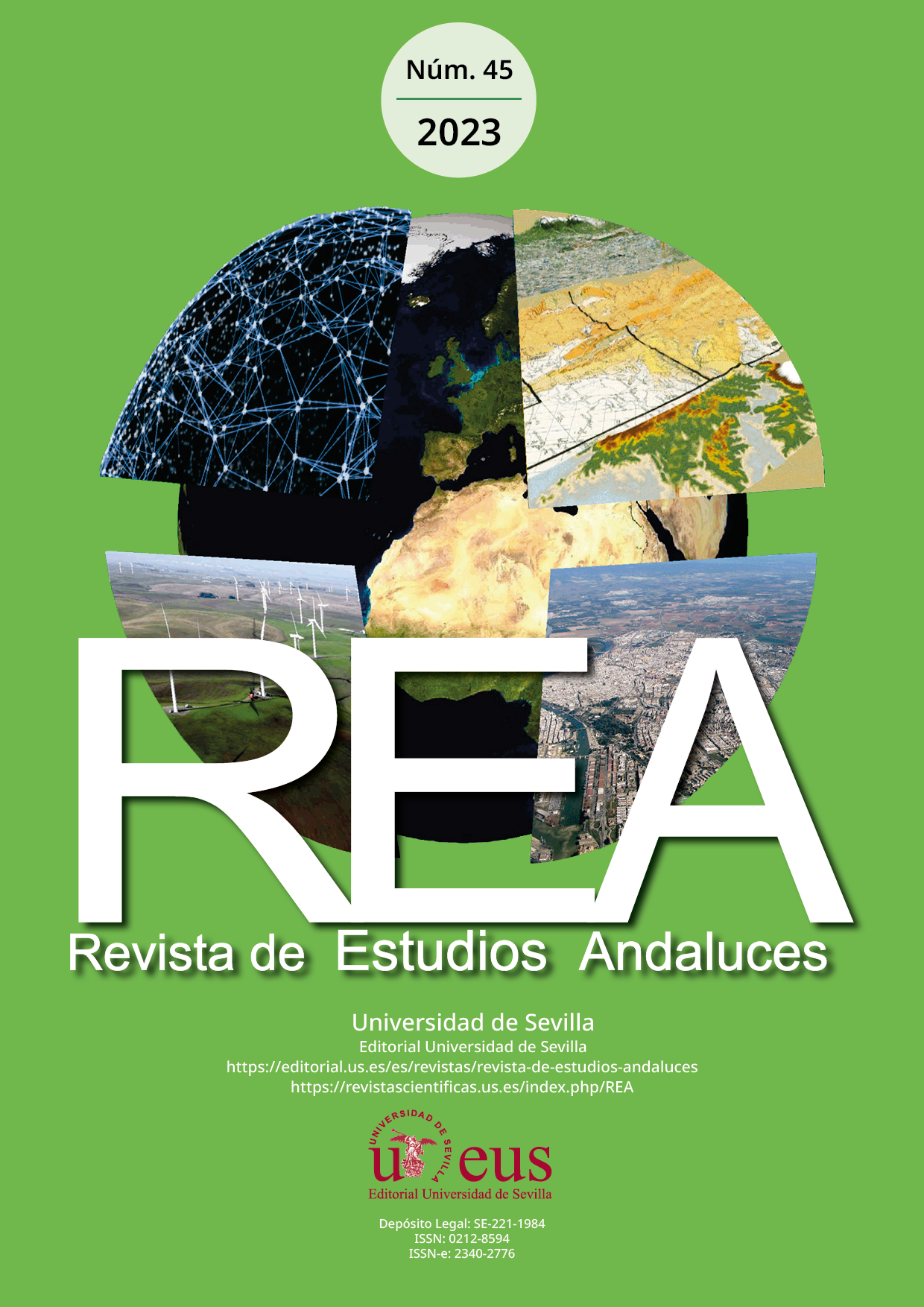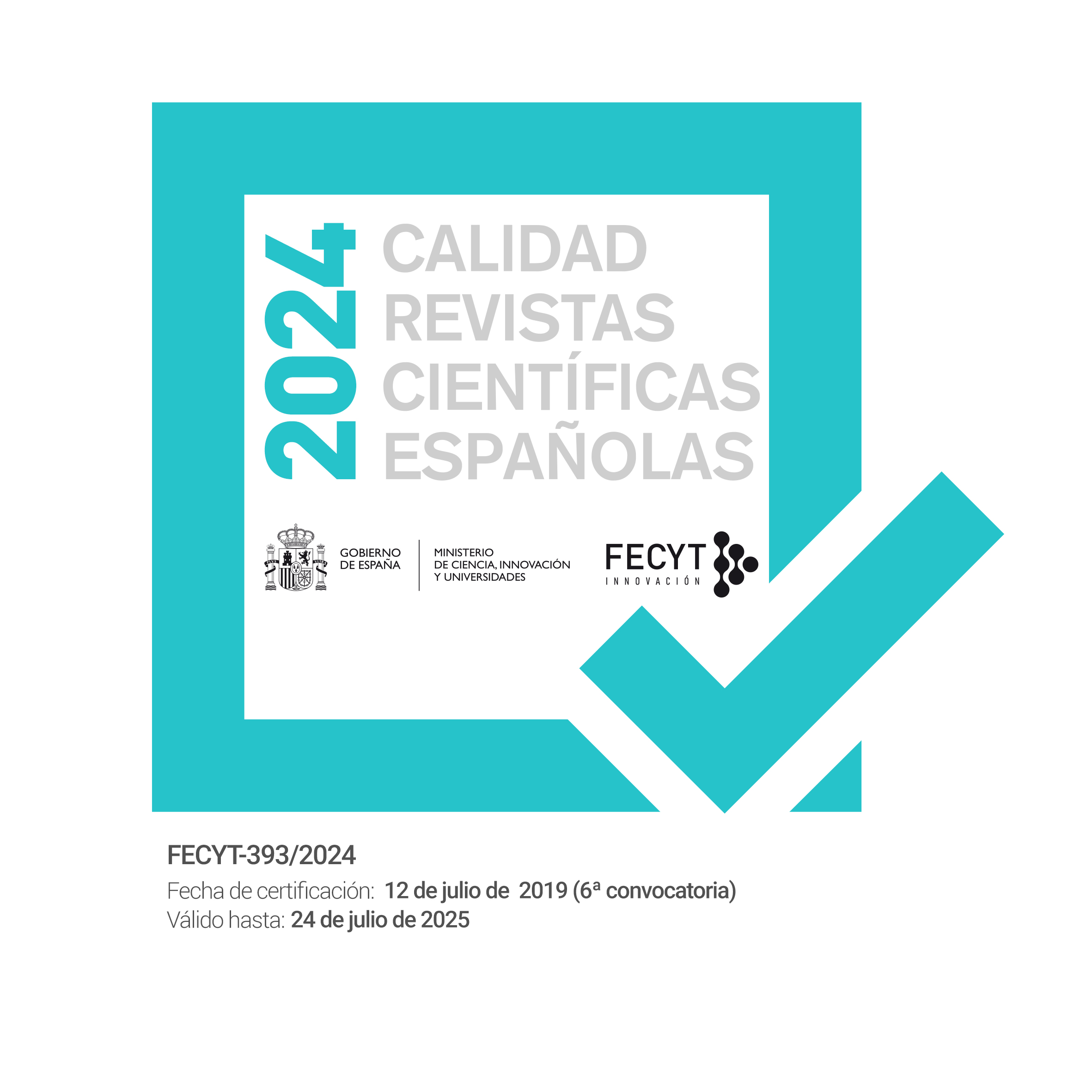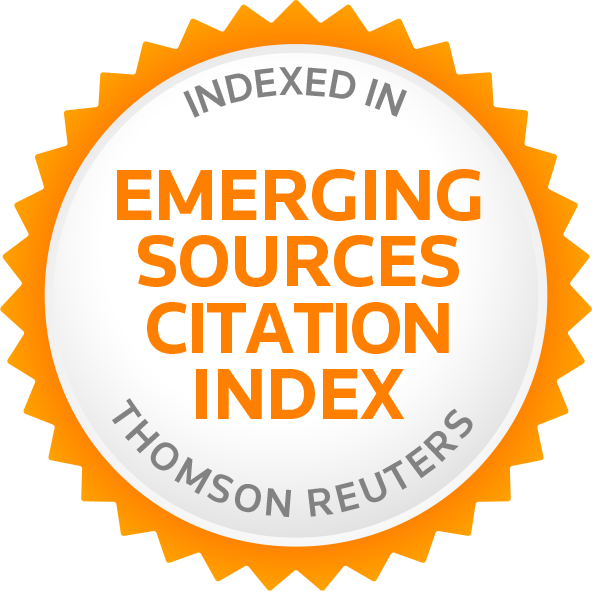Capacidad adaptativa del territorio SIPAM de la Axarquía (Málaga) a partir de Soluciones basadas en la Naturaleza
DOI:
https://doi.org/10.12795/rea.2023.i45.02Palabras clave:
Erosión del suelo, SIPAM, Capacidad adaptativa, Modo de vida, Mediterráneo, NbSResumen
El estado de degradación del suelo en las áreas mediterráneas dificulta una actividad agrícola sostenible, especialmente en un contexto de cambio global, donde las tasas de pérdida de suelo se ven acrecentadas por las modificaciones en la dinámica pluviométrica. Así, el territorio declarado como “Sistema Importantes del Patrimonio Agrícola Mundial” (SIPAM) dedicado a la uva pasa de la Axarquía (Málaga) se identifica como un área de especial fragilidad frente a estos procesos. Esta investigación pretende, por un lado, determinar la susceptibilidad a la erosión del suelo y, especialmente, conocer qué papel está jugando las Soluciones basadas en la Naturaleza (NbS) en la capacidad adaptativa de este territorio. Para ello, se ha analizado estadísticamente la dinámica pluviométrica, se han determinado las tasas de erosión del suelo a partir del modelo RUSLE y, por último, se ha desarrollado una metodología cualitativa para la evaluación de las NbS. Los resultados muestran un claro descenso de las precipitaciones anuales y una concentración de la lluvia en eventos de mayor intensidad, dando lugar a una mayor erosividad de la lluvia y a altas tasas de pérdida de suelo. No obstante, las prácticas agrícolas y las diferentes estructuras identificadas son consideradas estrategias sostenibles de adaptación a este tipo de riesgos naturales, conformándose como NbS.
Descargas
Citas
Abu Hammad, A., Lundekvam, H., & Børresen T. (2004). Adaptation of RUSLE in the eastern part of the Mediterranean region. Environmental Management, 34(6), 829–841. http://dx.doi.org/10.1007/s00267-003-0296-7
Arnáez, J., Lasanta, T., Ruiz-Flaño, P., & Ortigosa, L. (2007). Factors affecting runoff and erosion under simulated rainfall in Mediterranean vineyards. Soil & Tillage Research, 93, 324–334. http://dx.doi.org/10.1016/j.still.2006.05.013
Avellanas, J.M.R., Velilla, F.J.V., Villas, D.B., & Martorell, J.A. (1999). Efecto del incendio forestal sobre la autosucesión vegetal y erosión, en los montes de Castejón de Valdejasa (Zaragoza). Geórgica: Revista del Espacio Rural, 7, 55–68.
Bryan, R.B. (2000). Soil erodibility and processes of water erosion on hillslope. Geomorphology, 32, 385-415. http://dx.doi.org/10.1016/S0169-555X(99)00105-1
Cerdà, A., Hooke, J. Romero-Diaz, A., Montanarella, L., & Lavee, H. (2010). Soil erosion on Mediterranean Type-Ecosystems. Land Degradation and Development, 21, 71-74. https://doi.org/10.1002/ldr.968
Colotti Bizzarri, E. (1998). Determinación de la energía cinética de la lluvia con datos horarios. Humánitas, 23(14), 55–72. http://saber.ucv.ve/ojs/index.php/rev_terr/article/view/1349
COM (2002). Towards a thematic strategy for soil production. Communication for the Commission to the Council, the European Parliament, the Economic and Social Committee and the Committee and the Committee of the Regions. COM (2002). 179end. Brussels. https://eur-lex.europa.eu/legal-content/EN/TXT/?uri=celex%3A52002DC0179
Consejería de Medio Ambiente (1984–1990) Proyecto Hydre: seguimiento de los recursos hídricos al servicio de las políticas regionales de la agricultura y del medio ambiente. Junta de Andalucía. http://www.juntadeandalucia.es/medioambiente/site/portalweb/menuitem.7e1cf46ddf59bb227a9ebe205510e1ca/?vgnextoid=d94bf36517057010VgnVCM1000000624e50aRCRD&vgnextchannel=4836a7aaaf4f4310VgnVCM2000000624e50aRCRD
Consejo de Europa (2000) Convenio Europeo del Paisaje. Florencia, Consejo de Europa. https://www.mapa.gob.es/es/desarrollo-rural/planes-y-estrategias/desarrollo-territorial/convenio.aspx
Coscarelli, R., & Caloiero, T. (2012). Analysis of daily and monthly rainfall concentration in Southern Italy, Calabria region. Journal of Hidrology, 416–417, 145-156. https://doi.org/10.1016/j.jhydrol.2011.11.047
Davies, K.K., Fisher, K.T., Dickson, M.E., Thrush, S.F., & Le Heron, R. (2015). Improving ecosystem service frameworks to address wicked problems. Ecology and Society 20(2), 37. https://doi.org/10.5751/ES-07581-200237
Diodato, N. (2004). Local models for rainstorm-induced hazard analysis on Mediterranean river torrential geomorphological systems. Natural Hazards and Earth System Sciences, 4, 389-397. https://doi.org/10.5194/nhess-4-389-2004
Diodato, N. (2006). Predicting RUSLE (Revised Universal Soil Loss Equation) monthly erosivity index from readily available rainfall data in Mediterranean area. Environmentalist, 26, 63–70. http://dx.doi.org/10.1007/s10669-006-5359-x
Dunne, T., Zhang, W., & Aubry, B. (1991). Effects of Rainfall, Vegetation, and Microtopography on Infiltration and Runoff. Water Resource Res., 27, 2271–2285, http://dx.doi.org/10.1029/91WR01585
Durignon, V.L., Carvalho, D.F., Antunes, M.A.H., Oliveira, P.T.S., & Fernandes, M.M. (2014). NDVI time series for monitoring RUSLE cover management factor in a tropical watershed. International Journal of Remote Sensing, 35(2), 441-453. https://doi.org/10.1080/01431161.2013.871081
Eaton, J.M., McGoff, N.M., Byrne, K.A., Leahy, P., & Kiely, G. (2008). Land cover change and soil organic C stocks in the Republic of Ireland 1851–2000. Climate Change, 91, 317–334. http://dx.doi.org/10.1007/s10584-008-9412-2
Evette, A., Labonne, S., Rey, F., Liebault, F., Jancke, O., & Girel, J. (2009). History of Bioengineering Techniques for Erosion Control in Rivers in Western Europe. Environmental Management, 43, 972–984. http://dx.doi.org/10.1007/s00267-009-9275-y
Farres, P. (1978). The role of time and aggregate size in the crusting process. Earth Surface Processes and Landforms, 3, 243-254. https://doi.org/10.1002/esp.3290030304
Ferreira, V., & Panagopoulos, T. (2014). Seasonality of Soil Erosion Under Mediterranean Conditions at the Alqueva Dam Watershed. Environmental Management, 54, 67–83. http://dx.doi.org/10.1007/s00267-014-0281-3
Fournier, F. (1960) Climat et érosion. Paris: Presses Universitaires de France.
Gil Guirado, S., Pérez, A., Lopez, F., & Barriendos, M. (2014). Review of flood alert thresholds based on the socioeconomic impact of catastrophic events in the southeastern Spain. EMS Annual Meeting Abstracts, 11. https://meetingorganizer.copernicus.org/EMS2014/EMS2014-311.pdf
Guijarro Pastor, J.A. (2002). Tendencias de la precipitación en el litoral mediterráneo español. En J.A. Guijarro, M. Grimalt, M. Laita, & S. Alonso (Eds.) El agua y el clima (p. 237-246). AEC, Serie A. https://repositorio.aemet.es/handle/20.500.11765/9143?mode=full
Guitián, F., Carballas, T. (1976). Técnicas de análisis de suelos. Ed. Pico-Sacro. Santiago.
Huang, J., Haipeng, H., Xiaodan, G., Guoyin, W., & Ruixia, G. (2016). Accelerated dryland expansion under climate change. Nature Climate Change, 6, 166–171. https://doi.org/10.1038/nclimate2837
Hueso González, P., Martínez Murillo, J.F., & Muñoz Rojas, M. (2018) The role of Organic amendments in drylands restoration. Current Opinion in Environmental Sciences and Health, 5, 1– 6. https://doi.org/10.1016/j.coesh.2017.12.002
Imeson, A.C., & Vis, M. (1982). Factors influencing the aggregate stability of soils in natural and semi-natural ecosystems at different altitudes in the Central Cordillera of Colombia. Z. Für Geomorphol, 44, 94–105.
Imeson, A.C., & Lavee, H. (1998). Soil erosion and climate change: the transect approach and the influence of the scale. Geomorphology, 23, 319-337. https://doi.org/10.1016/S0169-555X(98)00005-1
Imeson, A.C., Lavee, H., & Calvo, A. (1998). The erosional response of calcareous soils along a climatological gradient in Southeast Spain. Geomorphology 24, 3–16. https://doi.org/10.1016/S0169-555X(97)00097-4
IPCC, Intergovernmental Panel on Climate Change (2021). Climate Change 2021: The Physical Science Basis. Contribution of Working Group I to the Sixth Assessment Report.
IUCN (2022). Nature-based Solutions. https://www.iucn.org/our-work/theme/nature-based-solutions
Katz, R., Brush, G., & Parlange, M. (2005). Statistics of extremes: Modeling ecological distur- bances. Ecology, 86, 1124–1134. https://doi.org/10.1890/04-0606
Keesstra, S., Nunes, J., Novara, A., Finger, D., Avelar, D., Kalantari, Z., & Cerdà, A. (2018). The superior effect of nature based solutions in land management for enhancing ecosystem services. Science of The Total Environment, 610-611, 997–1009. https://doi.org/10.1016/j.scitotenv.2017.08.077
Khademalrasoul, A., & Amerikhah, H. (2020). Assessment of soil erosion patterns using RUSLE model and GIS tools (case study: the border of Khuzestan and Chaharmahal Province, Iran). Modeling Earth Systems and Environment, 7. https://doi.org/10.1007/s40808-020-00931-6
Kirkby, M.J., Abrahart, R., McMahon, M.D., Shao, J., & Thornes, J.B. (1998). MEDALUS soil erosion models for global change. Geomorphology, 24, 35–49. https://doi.org/10.1016/S0169-555X(97)00099-8
Kou, M., Jiao, J., Yin, Q., Wang, N., Wang, Z., Li, Y., Yu, W., Wei, Y., Yan, F., & Cao, B. (2016). Successional trajectory over 10 years of vegetation restoration of abandoned slope croplands in the Hill-Gully region of the Loess Plateau. Land Degradation and Development, 27, 919–932. https://doi.org/10.1002/ldr.2356.
Lavee, H., & Poesen, J. (1991). Overland flow generation and continuity on stone cover soil surfaces. Hydrological Processes, 5, 345–360. https://doi.org/10.1002/hyp.3360050403
Lavee, H., Imeson, A.C., & Pariente, S. (1998). The impact of climate change on geomorphology and desertification along a Mediterranean arid transect. Land Degradation and Development, 9, 407-422. https://doi.org/10.1002/(SICI)1099-145X(199809/10)9:53.0.CO;2-6
Leach, M., Scoones, I., & Stirling, A. (2010). Dynamic sustainabilities: technology, environment, social justice. Earthscan. https://doi.org/10.4324/9781849775069
Lemus Cánovas, M., & López Bustins, J. (2016). Variabilidad espacio - temporal de la precipitación en el sur de Cataluña y su relación con la oscilación del mediterráneo occidental (WEMO) [Comunicación en Congreso]. X Congreso Internacional AEC: Clima, sociedad, riesgos y ordenación del territorio. Alicante, España. http://dx.doi.org/10.14198/XCongresoAECAlicante2016-21
Maltby, E. (2000). Ecosystem Approach: from principle to practice. Paper presented at Ecosystem Service and Sustainable Watershed Management in North China International Conference, Beijing, P.R. China, August 23 - 25, 2000
Marañés Corbacho, A., Sánchez Garrido, J.A., De Haro Lozaño, S., Sánchez Gomez, S.T., & Lozano Cantarero, F.J. (1994). Análisis de suelo, metodología e interpretación. Servicio de Publicaciones de la Universidad de Almería.
Martín Vide, J. (2004). Spatial distribution of a daily precipitation concentration index in peninsular Spain. International Journal of Climatology, 24, 959–971. https://doi.org/10.1002/joc.1030
Martínez-Murillo, J.F., Hueso-González, P., Ruiz-Sinoga, J.D., & Lavee, H. (2016a). Short-term experimental fire effects in soil and water losses in southern of Spain. Land Degradation and Development, 27, 1513-1522. http://doi.org/10.1002/ldr.2504.
Martínez-Murillo, J.F., Remond, R., Hueso-González, P., & Ruiz-Sinoga., J.D. (2016b). Vegetation cover resilence in a burned montainous area: the Rio Verde Wildfire (Province of Málaga, South of Spain). Pirineos, Revista de Ecología de Montaña, 171, 1-15. http://dx.doi.org/10.3989/pirineos.2016.171008
Martínez-Murillo, J. F., Hueso-González, P., & Ruiz-Sinoga, J. D. (2017). Impact of low pressure grazing in the hydrological and sediment connectivity in hillslopes under contrasted mediterranean climatic conditions (south of spain).: grazing and connectivity in mediterranean hillslopes. Land Degradation and Development, 29(4). http://dx.doi.org/1002/ldr.2809.
Martínez-murillo, J.F., Remond, R., & Ruiz-Sinoga, J.D. (2020). Validation of RUSLE K factor using aggregate stability in contrasted mediterranean eco-geomorphological landscapes (southern Spain). Environmental Research, 183, 109160. https://doi.org/10.1016/j.envres.2020.109160
McGinnis, M.D., & Ostrom, E. (2014). Social-ecological system framework: Initial changes and continuing challenges. Ecology and Society, 19(2), 30. https://doi.org/10.5751/ES-06387-190230
Moore, I.D., & Burch, G.J. (1986). Physical basis of the length-slope factor in the Universal Soil Loss Equation. Soil Science Society of America Journal, 50(5), 1294–1298. http://dx.doi.org/10.2136/sssaj1986.03615995005000050042x
Moreno, J.M. (2005). Evaluación Preliminar General de los Impactos en España por Efecto del Cambio Climático. Ministerio de Medio Ambiente, Universidad de Castilla-La Mancha. https://www.miteco.gob.es/es/cambio-climatico/temas/impactos-vulnerabilidad-y-adaptacion/plan-nacional-adaptacion-cambio-climatico/evaluacion-preliminar-de-los-impactos-en-espana-del-cambio-climatico/eval_impactos.aspx
Morgan, R.P.C., Quinton, J.N., Smith, R.E., Govers, G., Poesen, J.W.A, Auerswald, K., & Styczen, M.E. (1998). The European soil erosion model (EUROSEM): A Dynamic approach for predicting sediment transport from fields and small catchments. Earth Surface Processes and landforms, 23(6), 527-544. https://doi.org/10.1002/(SICI)1096-9837(199806)23:6<527::AID-ESP868>3.0.CO;2-5
Norrant, C., & Douguedroit, A. (2005). Monthly and daily precipitation trends in the Mediterranean (1950–2000). Theoretical and Applied Climatology, 83, 89– 106. https://doi.org/10.1007/s00704-005-0163-y
Olcina Cantos, J. (2017). Incremento de episodios de inundación por lluvias de intensidad horaria en el sector central del litoral mediterráneo español: análisis de tendencias en Alicante. Sémata. Ciencias Sociais e Humanidades, 29, 143–163. https://doi.org/10.15304/s.29.4213
Pacheco, H.A., Cevalleros, R.X., & Vinces, C.J. (2019). Cálculo del factor C de la RUSLE, en la cuenca del río Carache, Trujillo-Venezuela usando imágenes del Satélite Miranda VRSS-1. Espacios, 40(3), 6. http://www.revistaespacios.com/a19v40n03/19400306.html
Panagos, P., Borrelli, P., Poesen, J., Ballabio, C., Lugato, E., Meusburger.K., Montanarella, L., & Alewell, C. (2015). The new assessment of soil loss by water erosion in Europe. Environmental Science & Policy, 54, 438-447. http://dx.doi.org/10.1016/j.envsci.2015.08.012
Pérez Cueva, A. (1983). Precipitaciones extraordinarias en la España peninsular. Agricultura y Sociedad, 28, 189-203. https://dialnet.unirioja.es/servlet/articulo?codigo=82563
Pita López, M.F., Camarillo Naranjo, J.M., & Aguilar Alba, A. (1999). La evolución de la variabilidad pluviométrica en Andalucía y sus relaciones con el índice de la NAO. In J.M. Raso, & J. Martín Vide (eds.) La Climatología española en los albores del siglo XXI. Vilassar Oikos-tau. Asociación Española de Climatología, Serie A 1. https://idus.us.es/handle/11441/30501
Prosdocimi, M., Cerdà, A., & Tarolli, P. (2016). Soil water erosion on Mediterranean vineyards: a review. Catena, 141, 1–21. http://dx.doi.org/10.1016/j.catena.2016.02.010.
Rawat, K.S., & Singh, S.K. (2018). Appraisal of Soil Conservation Capacity Using NDVI Model-Based C Factor of RUSLE Model for a Semi Arid Ungauged Watershed: a Case Study. Water Conservation Science and Engineering, 3, 47-58. https://doi.org/10.1007/s41101-018-0042-x
Reid, J.B., & Goss, M.J. (1981). Effect of living roots of different plant species on the aggregate stability of two arable soils. Journal of Soil Science, 32, 521–541. https://doi.org/10.1111/j.1365-2389.1981.tb01727.x
Renard, K.G., Foster, G.R., Weesies, G.A., McCool, D.K., & Yoder, D.C. (1997). Predicting soil erosion by water: a guide to conservation planning with the Revised Universal Soil Loss Equation (RUSLE). Washington DC: U.S. Department of Agriculture, Agricultural Research Service. https://agris.fao.org/agris-search/search.do?recordID=XF2015047686
Rengasamy, P., & Olsson, K.A. (1991). Sodicity and soil structure. Australian Journal of Soil Research, 29, 935-952. http://dx.doi.org/10.1071/SR9910935
Reynolds, W.D., Elrick, D.E., Youngs, E.G., Amoozegar, A., Booltink, H.W.G., & Bouma, J. (2002). Saturated and field-saturated water flow parameters. En J.H. Dane (Ed.) Methods of soil analysis (Pt 4) (p. 797-878). Soil Science Society of America: Madison, WI, USA.
Risse, L.M., Nearing, M.A., Laflen, J.M., & Nicks, A.D. (1993). Error assessment in the universal soil loss equation. Soil Science Society of America Journal, 57, 825. https://doi.org/10.2136/sssaj1993.03615995005700030032x
Romero Díaz, M.A., López Bermudez F., Thornes J.B., Francis C., & Fisher G.C. (1986). Variability of overland flow erosion rates in a semiarid mediterranean environment under matorralcover, Murcia, Spain. Catena Supplement, 13, 1–11.
Romero Diaz, A., Ruiz Sinoga, J. D., Robledano, F., & Cerdá, A. (2017) Ecosystem responses to land abandonment in Western Mediterranean Mountains. Catena, 149, 824-835. https://doi.org/10.1016/j.catena.2016.08.013
Ruiz García, J.A., & Núñez Mora, J.A. (2011). Sobre los periodos de retorno de las precipitaciones extraordinarias en la Comunidad Valenciana. Calendario Meteorológico, 2012 (AEMET), 265–273. https://repositorio.aemet.es/handle/20.500.11765/2465
Ruiz Sinoga, J.D. (1983). Permanencia y crisis de la agricultura aldeana: Competa. Biblioteca Popular Malagueña. Diputación Provincial de Málaga.
Ruiz Sinoga, J.D., García Marín, R., Martínez Murillo, J.F., & Gabarrón Galeote, M.A. (2010). Precipitation dynamics in southern Spain: trends and cycles. International journal of climatology, 31, 2281–2289. https://doi.org/10.1002/joc.2235
Ruiz-Sinoga, J.D., & Romero Diaz, A. (2010). Soil degradation factors along a Mediterranean pluviometric gradient in Southern Spain. Geomorphology, 118(3–118), 359– 368. https://doi.org/10.1016/j.geomorph.2010.02.003
Sempere Torres, D. (1994). La lluvia como agente erosivo: formación, distribución, erosividad e intercepción. Ingeniería hidráulica en Méjico, 9(2), 5–18. https://dialnet.unirioja.es/servlet/articulo?codigo=7357270
Senciales González, J.M., & Ruiz Sinoga, J.D. (2013) Análisis espacio-temporal de las lluvias torrenciales en la ciudad de Málaga. Boletín de la Asociación de Geógrafos Españoles, 61, 7– 24. http://dx.doi.org/10.21138/bage.1533
Sharpley, A.N., & Williams, J.R. (1990). Erosion/Productivity Impact Calculator. USA Department of Agriculture. Technical Bulletin, 1768, 235.
Sillero-Medina, J.A., Hueso-González, P., & Ruiz-Sinoga, J.D. (2019). La precipitación geomorfológica como elemento clave en el modelado del paisaje mediterráneo. Boletín de la Asociación de Geógrafos Españoles, 82, 2780, 1-40. http://dx.doi.org/10.21138/bage.2780.
Sillero-Medina, J.A., Pérez-González, M.E., Martínez-Murillo, J.F., & Ruiz-Sinoga, J.D. (2020a). Factors affecting eco-geomorphological dynamics in two contrasting Mediterranean environments. Geomorphology, 352. https://doi.org/10.1016/j.geomorph.2019.106996
Sillero-Medina, J.A., Hueso-González, P., & Ruiz-Sinoga, J.D. (2020b). Differences in the Soil Quality Index for Two Contrasting Mediterranean Landscapes in Southern Spain. Land, 9(11), 405. https://doi.org/10.3390/land9110405
Sillero Medina, J.A., Martínez Murillo, J.F., & Ruiz Sinoga, J.D. (2021) Efectos del incremento de la erosividad de lluvia en la estimación de pérdida de suelo (RUSLE) en el periodo 1997-2018: comparación en dos cuencas mediterráneas con diferentes condiciones pluviométricas. Boletín de la Asociación de Geógrafos Españoles, 89. https://doi.org/10.21138/bage.3092.
Simelton, E., Carew-Reid, J., Coulier, M., Damen, B., Howell, J., Pottinger-Glass, C., Tran, H.V., & Van Der Meiren, M. (2021). NBS Framework for Agricultural Landscapes. Frontiers in Environmental Science, 9, 678367. https://doi.org/10.3389/fenvs.2021.678367
Smith, R.D., & Maltby, E. (2003). Using the Ecosystem Approach to implement the convention on biological diversity: key issues and case studies, Gland, Switzerland and Cambridge, UK: IUCN. https://doi.org/10.2305/IUCN.CH.2003.CEM.2.en
Thorne, C.R. (1990). Effects of Vegetation on Riverbank Erosion and Stability. In J.B. Thornes (Ed.) Vegetation and Erosion (pp. 125-144). Wiley. Chichester, England.
Thornes, J.B. (1985). The ecology of erosion. Geography, 70, 222-235. https://doi.org/10.1177/0309133310367548
Tisdall, J.M., & Oades, J.M. (1982). Organic matter and water stable aggregates in soils. Journal of soil science, 3, 141–163. https://doi.org/10.1111/j.1365-2389.1982.tb01755.x
Van der Knijff, J.M., Jones, R.J.A., & Montanarella, L. (2000). Soil erosion risk assessment in Europe. Luxembourg: Office for Official Publications of the European Communities.
Waylen, K.A., Blackstock, K.L., & Holstead, K.L. (2015). How does legacy create sticking points for environmental management? Insights from challenges to implementation of the ecosystem approach. Ecology and Society, 20(2), 21. https://doi.org/10.5751/ES-07594-200221
Webster, R., & Morgan, R.P.C. (2002). Soil Erosion and Conservation. In T.J. Toy, G.R. Foster & K.G. Renard (Eds.) Soil Erosion: Processes, Prediction, Measurement, and Control. John Wiley & Sons.
Wischmeier W.H., & Smith D.D. (1978). Predicting rainfall erosion Losses: A guide to conservation planning. Washington: Science and Education Administration, U.S. Department of Agriculture. https://naldc.nal.usda.gov/catalog/CAT79706928
Wischmeier, W.H. (1959). A Rainfall Erosion Index for a Universal Soil-Loss Equation. Soil Science Society of America Proceedings, 23, 246–249. https://doi.org/10.2136/sssaj1959.03615995002300030027x
Wischmeier, W.H., Jonson, C.B., & Cross, B.V. (1971). A soil erodability nomoghaph for farmland and construction sites. Journal of Soil and Water Conservation, 26, 189-193.
Yus-Ramos, R., Carrillo-Romero, O., Fernández-Camacho, V., & Torres-Delgado, M.A. (2020) La burbuja de los cultivos subtropicales y el colapso hídrico en la Axarquía. Gabinete de Estudios de la Naturaleza de la Axarquía (GENA), Vélez-Málaga.
Zihni, E. (2000). C-Factor Mapping Using Remote Sensing and GIS. A Case Study of Lom Sak / Lom Kao, Thailand. Soil Science Division International Institute for Aerospace Survey and Earth Sciences Enschede, the Netherlands. http://geb.uni-giessen.de/geb/volltexte/2004/1537/
Publicado
Cómo citar
Número
Sección
Licencia
Derechos de autor 2023 Revista de Estudios Andaluces

Esta obra está bajo una licencia internacional Creative Commons Atribución-NoComercial-CompartirIgual 4.0.
La edición electrónica de la Revista de Estudios Andaluces se ofrece en acceso abierto desde el número 28 publicado en 2011 hasta la actualidad. Las ediciones impresa y electrónica de esta Revista son editadas por la Editorial de la Universidad de Sevilla, siendo necesario citar la procedencia en cualquier reproducción parcial o total.
La Revista de Estudios Andaluces no cobra tasas por el envío de trabajos, ni tampoco cuotas por la publicación de sus artículos. La Revista es gratuita desde el momento de la publicación de cada número y sus contenidos se distribuyen con la licencia “CreativeCommons Atribución-NoComercial-SinDerivar 4.0 Internacional” , que permite al usuario de la Revista de Estudios Andaluces criterios que cumplen con la definición de open access de la Declaración de Budapest en favor del acceso abierto. Puede consultar desde aquí la versión informativa y el texto legal de la licencia. Esta circunstancia ha de hacerse constar expresamente de esta forma cuando sea necesario.







